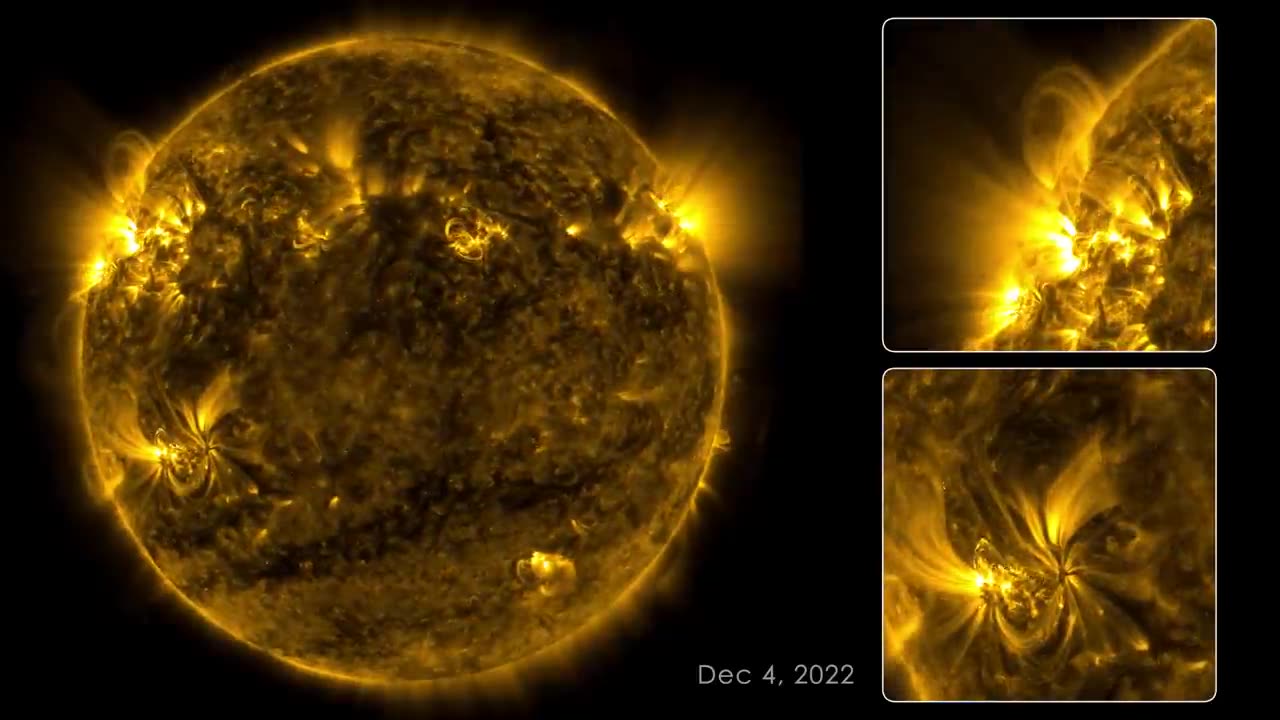Premium Only Content

133 Days on the Sun
Title: "133 Days on the Sun: A Solar Odyssey in 8K Ultra HD"
Introduction (0:00 - 0:45):
Start with an attention-grabbing hook: "Greetings, fellow space enthusiasts! Today, we're embarking on an extraordinary journey as we explore '133 Days on the Sun,' a mesmerizing odyssey into the heart of our star, presented in breathtaking 8K Ultra HD!"
Explain the significance of studying the Sun, its impact on our solar system, and the unique opportunity to observe it in high resolution.
Mention that you'll provide a detailed analysis of this incredible mission.
Segment 1: The Sun's Mysteries (0:45 - 2:30):
Briefly discuss why studying the Sun is essential for understanding our solar system and the universe.
Highlight the scientific questions and mysteries surrounding the Sun, such as solar flares, sunspots, and its magnetic field.
Explain the importance of long-duration observations like "133 Days on the Sun."
Segment 2: The Solar Odyssey Mission (2:30 - 4:00):
Introduce the "133 Days on the Sun" mission, including the spacecraft or observatory used.
Discuss the mission's objectives, such as capturing detailed images of the Sun's surface and monitoring its activity.
Mention any groundbreaking technology or innovations used in the mission.
Segment 3: Capturing the Sun's Dynamic Beauty (4:00 - 6:30):
Present the awe-inspiring 8K Ultra HD visuals of the Sun, showcasing its ever-changing surface, prominences, and sunspots.
Describe the specific observations made during the 133-day mission and their scientific significance.
Use narration to explain the Sun's dynamic behavior, including solar flares and coronal mass ejections.
Segment 4: Unraveling Solar Mysteries (6:30 - 8:00):
Discuss the scientific insights gained from "133 Days on the Sun," such as improved understanding of solar activity and its potential impact on Earth.
Explain how long-term solar observations contribute to space weather forecasting and solar physics.
Mention any discoveries or surprises encountered during the mission.
Segment 5: The Future of Solar Exploration (8:00 - 9:30):
Share insights into upcoming missions and technology advancements in solar observation.
Discuss how future missions will continue to unravel the Sun's mysteries and improve our ability to predict space weather.
Encourage viewers to stay engaged with solar science and space exploration.
Conclusion (9:30 - 10:00):
Summarize the importance of missions like "133 Days on the Sun" in advancing our knowledge of our star and its impact on our solar system.
Express your fascination with the stunning visuals and scientific discoveries.
Invite viewers to like, share, and subscribe for more space-related content.
Closing:
Display your social media links and encourage viewers to follow for updates.
Suggest related videos or playlists for viewers interested in solar science and space exploration.
Ensure that your video features high-quality 8K Ultra HD visuals, clear and engaging narration, and any appropriate animations or graphics to enhance the viewer's experience. Additionally, consider using background music to add depth to your presentation and create a sense of awe and wonder.
-
 LIVE
LIVE
Akademiks
5 hours agoDay 1/30. Big U 43 Count Indictment. Ye Interview? YB Home. Yella Beezy Bails out. Durk + Nav drop
3,101 watching -
 4:19:58
4:19:58
SynthTrax & DJ Cheezus Livestreams
1 day agoFriday Night Synthwave 80s 90s Electronica and more DJ MIX Livestream BLACKLIGHT Edition
47.9K4 -
 LIVE
LIVE
VapinGamers
4 hours ago $0.49 earned🎮🔥 Fortnite/Farlight 84/COD - Maybe Dubs, Maybe Losses, Always Fun! - !upgrade
149 watching -
 LIVE
LIVE
TheNateVibez
3 hours agoGood Times & Friday Vibes✌ - Fraggin💥- ArmyVet🫡
214 watching -
 4:28:12
4:28:12
KataJade
4 hours agoHappy Apex Friday
6.03K -
 LIVE
LIVE
The tooth entertainment
2 hours agoGears Of War Judgment Livestream lets get to 300 followers #GamingOnRumble
135 watching -
 LIVE
LIVE
xBuRnTx
6 hours agoHappy Friday Everyone!
56 watching -
 2:34:48
2:34:48
Laura Loomer
5 hours agoEP112: MS-13 EVICTED By President Trump
35.4K18 -
 2:53:28
2:53:28
Toolman Tim
3 hours agoCommunity Gaming Night!! | Among Us
15.1K -
 2:34:47
2:34:47
GamerGril
3 hours agoMost Dangerous Gril This Side Of The Mississippi
13.9K